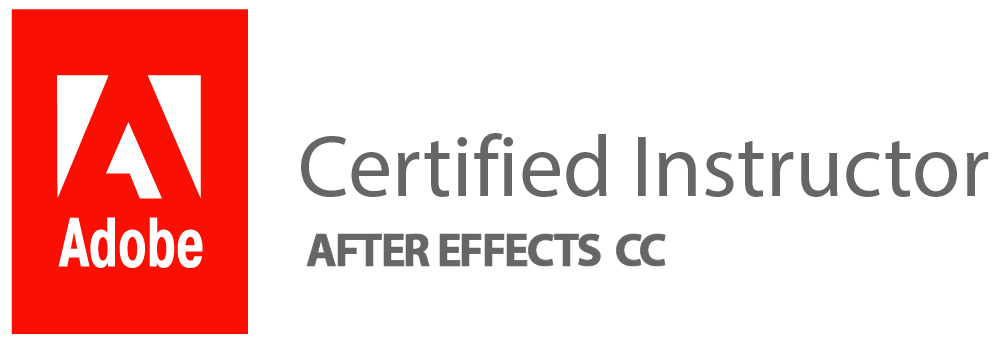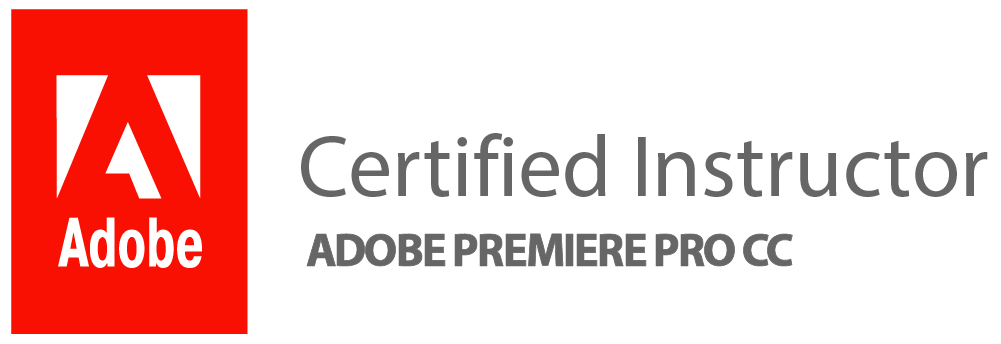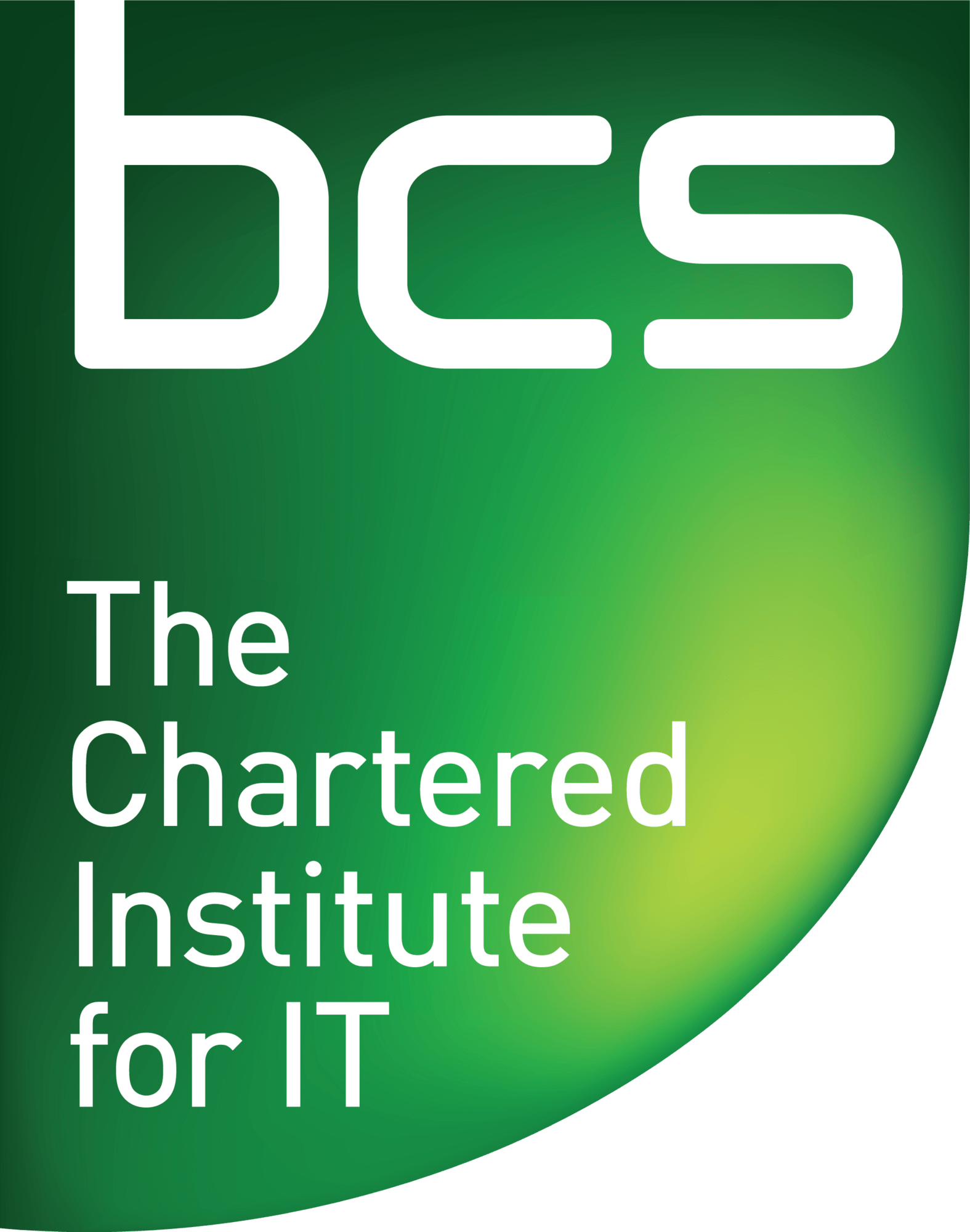What Types Of Graphic Design Projects Can Teens Do In Class?
Graphic design is a field that involves creating visual content to communicate messages. The aim of graphic design is to make information easily accessible and attractive to the intended audience. Graphic designers use various tools, including typography, colours, images, and illustrations, to convey their message.
In a graphic design course, students learn about the history of graphic design and its evolution over time. They study different types of designs, such as logos, posters, brochures, websites, and packaging. Students also learn about colour theory and how it affects the emotions of viewers. They are taught how to create layouts that are visually appealing using principles such as proportionality and contrast.
Additionally, students in a graphic design course acquire skills in software programs such as Adobe Illustrator and Photoshop. These programs assist them in creating digital designs that can be used for print or web media. They also develop skills in communication with clients or team members during a project’s development phase to ensure that their work meets client expectations.
Overall, graphic design courses equip students with both technical skills and creative thinking abilities necessary for success within this field.
History of graphic design:
In a graphic design course, students learn about the history of graphic design and how it has evolved over time. The course covers different periods and movements that have shaped the field of graphic design, such as Art Nouveau, Bauhaus, and Swiss Style. Students also study the work of influential designers like Paul Rand, Saul Bass, and Milton Glaser.
Apart from studying the theoretical aspects of graphic design history, students also get hands-on experience with various tools and techniques used in designing. They learn about typography and colour theory as well as how to use software like Adobe Photoshop, Illustrator, and InDesign. Additionally, they explore different mediums for creating designs, like print media or web-based graphics.
Overall, studying the history of graphic design helps students understand its evolution while gaining inspiration for their own creations. Knowing about past styles and techniques can help designers innovate new ideas by building on what came before them instead of starting from scratch every time they create something new.
Evolution and pioneers of the industry
In a graphic design course, students learn about the evolution of the industry and its pioneers. One of the most significant pioneers was William Morris, who founded the Arts and Crafts Movement in the late 19th century. The movement emphasized traditional craftsmanship and rejected mass production. Another important figure is Paul Rand, who transformed corporate identity design with his iconic logos for companies such as IBM, ABC, and UPS.
As technology advanced, so did graphic design. The introduction of computers changed everything from typography to layout to image creation. It also gave rise to software like Adobe Photoshop and Illustrator, which have become essential tools for designers today. With an understanding of these historical figures and their contributions to graphic design, students can gain insights into current trends in the field while developing their own unique style.
Elements of design:
In a graphic design course, students learn about the fundamental elements of design. These include colour, typography, composition, space, form, and texture. Colour is an essential element in graphic design as it can evoke emotions and communicate messages. Students will study colour theory to understand how colours work together and how to use them effectively in their designs.
Typography refers to the art of arranging typeface in a visually appealing way. It involves understanding different font styles and sizes and how they can convey a tone or mood. Composition is another critical element that involves arranging various visual elements in an aesthetically pleasing way. This could include balancing negative space with positive space or creating a focal point using contrast.
Space, form, and texture are other fundamental elements that students will study in a graphic design course. Space refers to how designers use the area around objects to create meaning or add emphasis. Form deals with the three-dimensional aspect of design, while texture focuses on adding depth through visual patterns or tactile sensations. By mastering these key elements of design, students can start creating compelling visuals that communicate their message effectively.
Colour theory, typography, composition, etc.
One of the most important aspects of graphic design is colour theory. In a graphic design course, students learn how different colours interact with each other and how to use them effectively in designs. They also learn about colour psychology and the emotions that different colours can evoke in viewers.
Typography is another crucial aspect of graphic design. Students study various fonts and typefaces, learning how to pair them together for maximum impact. They also learn about hierarchy and spacing, ensuring that text is legible and easy to read.
Composition is yet another essential element of graphic design. Students learn about balance, contrast, and visual weight when putting together designs. They also study grid systems and layout principles for creating aesthetically pleasing compositions that effectively communicate their intended message to the viewer.
Software and technology:
In a graphic design course, students typically learn the fundamentals of design theory and principles. They study typography, colour theory, composition, layout and other elements of visual communication. Students also learn how to use industry-standard software such as Adobe Photoshop, InDesign and Illustrator.
Additionally, students explore different types of design, such as branding and identity design, packaging design, editorial design and web design. The curriculum often includes projects that incorporate real-world scenarios to prepare students for the professional world.
As technology continues to evolve rapidly in the field of graphic design, courses may also cover topics like user experience (UX) and user interface (UI) design for websites and apps. There may be a focus on coding languages like HTML and CSS or on emerging technologies like virtual reality or augmented reality. Overall, a graphic design course provides a comprehensive education in both traditional artistry and cutting-edge technology for aspiring designers.
Tools used for designing and editing graphics
In a graphic design course, students are exposed to a wide range of tools used for designing and editing graphics. Adobe Creative Suite is one of the most popular software packages used by designers. It includes programs such as Photoshop, Illustrator, and InDesign. Photoshop is primarily used for image manipulation and photo editing, while Illustrator is ideal for creating vector-based graphics like logos and typography. InDesign is great for print design projects like brochures or flyers.
Other helpful tools include Canva, which is an online platform that offers pre-designed templates for social media graphics, presentations, and more. The sketch is another popular tool that’s loved by UI/UX (user interface/user experience) designers. It allows users to create wireframes and designs for websites or mobile apps with ease.
Regardless of the tool you choose to use as a designer or editor of graphics in your coursework or professional career path, it’s important to learn how each one functions so that you can select the right one based on your specific needs in any given project.
Design process:
In a graphic design course, you learn about the fundamental principles of design and how to apply them in creating visual communication. One of the most important aspects of graphic design is the design process. This involves understanding the problem at hand, researching and gathering information, ideation or brainstorming, sketching, refining ideas, and executing final designs.
The first step in the design process is often identifying what needs to be communicated through visuals. This could be anything from a product advertisement to an informational brochure. Once this is established, designers conduct research on their target audience and competitors to gain insight into what will resonate with their audience.
Ideation comes next, where designers generate multiple ideas for designs that are then refined down to a few top choices before moving onto sketching and wireframing. This allows for experimentation without committing too much time to a single idea that may not work out well in execution.
Finally, after thoroughly reviewing sketches and making any necessary changes or refinements based on feedback from peers or clients alike – designers move on to execution, creating finished designs using software like Adobe Photoshop or Illustrator that are ready for production as needed by clients.
Research, brainstorming, sketching, refining
In a graphic design course, students are introduced to the creative process of designing aesthetically pleasing visual communication. This involves research, brainstorming, sketching and refining ideas to create a final product that meets specific requirements. Research is an essential part of the design process as it helps designers understand their target audience, their needs and preferences. They gather information about current trends, competitors and industry standards to develop unique designs that stand out.
Brainstorming involves generating multiple ideas that can solve a particular problem. Designers come up with different concepts by asking questions, discussing ideas with colleagues or clients and exploring various options. Sketching is where the designer begins to put their idea on paper using rough sketches or digital tools such as Adobe Illustrator or Photoshop. By refining their initial sketches into detailed designs through feedback from peers or clients, they can identify areas for improvement before proceeding to the final stage, which involves producing finished work using a variety of media such as print or digital platforms.
Overall, studying graphic design provides valuable skills in research, creativity and problem-solving while also teaching techniques for producing quality visual communication.
Specializations in graphic design:
Aspiring graphic designers can choose from a wide range of specializations to hone their skills and expertise. One of the most popular areas of focus is print design, which involves creating visual elements for printed materials such as brochures, magazines, flyers, and book covers. Print designers must have an eye for detail and a deep understanding of typography, colour theory, layout design, and composition.
Another specialization within graphic design is web design. As more businesses shift towards digital platforms, the demand for skilled web designers continues to grow. Web designers play a crucial role in creating engaging and user-friendly websites that attract visitors and drive conversions. They must be proficient in coding languages like HTML, CSS, and JavaScript, as well as have knowledge about user experience (UX) and user interface (UI) design.
Lastly, there are motion graphics which involve designing moving or animated images using software such as Adobe After Effects or Cinema 4D. Motion graphics are used in various media like advertisements or explainer videos where static images cannot convey the intended message effectively. A motion graphics designer requires specialized skills such as animation techniques which include timing and movement fundamentals, along with strong storytelling abilities to develop clear narratives through visuals.
Different career paths within the industry
Graphic design is a vast field that offers various career paths based on an individual’s interests and specialization. One can choose to become a graphic designer, art director, creative director, UX/UI designer, web developer, or illustrator. Graphic designers are responsible for creating visual concepts using computer software or by hand that communicates ideas that inspire, inform and captivate consumers. They work with clients to understand their needs and create designs that align with the brand’s vision.
Art directors are responsible for managing the creative team in advertising agencies or publications. They oversee designers’ and artists’ work to ensure that it meets the client’s needs while maintaining the overall aesthetic of the project. Creative directors lead the entire creative process of developing campaigns across all mediums and ensure that it aligns with their brands. UX/UI designers specialize in creating user-friendly interfaces for digital products such as websites or mobile apps, while web developers focus on building websites’ technical aspects using coding languages like HTML/CSS.
Illustrators specialize in creating visual representations of concepts, stories or ideas through different mediums, such as digital illustrations or traditional sketches/paintings. Overall, graphic design courses offer students various opportunities to explore different career paths within the industry based on their interests and strengths.
Summarizing the key aspects of studying graphic design
In a graphic design course, students learn various aspects of visual communication and design principles. They develop skills in creating designs for different mediums, such as print, web, and mobile applications. Students also learn about typography, colour theory, layout design, and image editing.
One key aspect of studying graphic design is learning to create designs that effectively convey a message or idea to the intended audience. This involves understanding how visual elements can be used to communicate emotions and ideas. Students also learn about the importance of branding and how to develop a consistent brand identity across different mediums.
Another critical aspect of studying graphic design is developing technical skills using software such as Adobe Illustrator, Photoshop, and InDesign. Learning these tools enables students to bring their creative vision to life by manipulating images, adjusting colour schemes, and designing layouts with precision. Overall studying graphic design requires creativity along with technical expertise in order to create compelling visuals that communicate effectively with target audiences.
What Will You Study At Our Graphic Design School?
In our graphic design school, you’ll study a variety of topics related to the field. These may include foundational concepts such as colour theory, composition, typography and layout design. You’ll also learn about the technical skills required for digital design, including Adobe Creative Suite programs like Photoshop, Illustrator and InDesign.
As you progress in your studies, you may delve deeper into specialized areas of graphic design such as branding, packaging design or web development. Additionally, many graphic design courses place emphasis on developing your conceptual and problem-solving skills, which are essential for success in this industry.
Overall, our graphic design school aims to provide students with a well-rounded education that prepares them for careers in various industries, from advertising to publishing to marketing agencies. With a strong foundation in both technical and creative aspects of graphic design, graduates will be equipped with the knowledge and skill set necessary to succeed in this dynamic field.
Design Thinking
One of the most important concepts taught in a graphic design course is design thinking. This approach involves understanding the needs and desires of users, identifying problems, and creating innovative solutions. Students learn to think critically about how design can impact an audience’s perception and behaviour and are taught techniques for generating new ideas.
Design thinking involves several stages, including empathizing with users, defining the problem, ideating potential solutions, prototyping designs, and testing them with users. These steps help designers create products that are not only aesthetically pleasing but also functional and relevant to their target audience’s needs. It also emphasizes collaboration among team members from different backgrounds to create diverse perspectives on a project.
Overall, design thinking is an essential skill for graphic designers as it allows them to solve complex problems with creative solutions. Considering user needs and collaborating with others who have different perspectives or expertise areas in a project or business context ensures that the graphical content produced is of high quality in terms of function as well as form.
Graphic Design Rules
In a graphic design course, students learn about the fundamental principles and elements of design that form the basis of all visual communications. They are taught to understand how to use typography, colour theory, composition, and layout to create effective designs for different platforms such as print media, websites, mobile apps, social media channels, etc.
One of the most important aspects of learning graphic design is understanding the rules or guidelines that govern good design. These rules include concepts like hierarchy, balance, contrast, proportion, repetition, and alignment. Understanding these principles helps designers create designs that are visually appealing and easy to read or navigate.
As designers progress in their education and careers, they may encounter more advanced rules, such as brand consistency guidelines or accessibility standards. Brand consistency ensures that all designs produced for a specific brand adhere to specific style guidelines so that consumers can easily recognize them. Accessibility standards help ensure that designs can be accessed by people with disabilities or impairments. Overall understanding these Graphic Design Rules provides a framework for creating effective visual communication in any context.
How Do You Start A Design Concept?
In a graphic design course, students learn various skills and techniques to create effective designs. They start with the basics of design theory, colour theory, typography, and layout. They also learn how to use industry-standard software such as Adobe Photoshop and Illustrator.
As they progress in their studies, they are introduced to more complex concepts such as branding, motion graphics, web design, and user experience (UX) design. In addition to technical skills, students also develop critical thinking skills necessary for problem-solving in real-world scenarios.
Throughout the course of their studies, students work on projects that challenge them to apply what they have learned in creative ways. By the end of their program, students should have developed a strong portfolio showcasing their unique style and skillset as a designer.
Composition, Hierarchy, Colour Theory, Ideas
In a graphic design course, students will typically learn about the key principles of composition and how they can be applied to create effective designs. This includes topics such as balance, contrast, alignment, and proximity. Understanding these principles is crucial for creating designs that are visually appealing, easy to navigate, and communicate the desired message effectively.
Another important area of study in a graphic design course is hierarchy. This involves learning how to prioritize information within a design so that it is presented in the most effective way possible. Hierarchy can be achieved through various techniques, such as using colour or typography to draw attention to specific elements of the design.
Colour theory is also a fundamental aspect of graphic design education. Students will learn about colour psychology and how different colours can evoke different emotions or feelings within an audience. They will also learn about colour schemes and how to use them effectively within their designs.
Finally, generating and developing ideas is another key focus area in a graphic design course. Students will learn how to brainstorm ideas for their projects, research their target audience, analyze competitors’ work and develop concepts that meet clients’ objectives while maintaining creativity at the same time. Learning these skills helps designers become more competent at producing successful pieces of work while keeping up with industry trends and best practices.
Thinking Outside The Box
When it comes to graphic design, thinking outside the box is a crucial skill. It’s not enough to simply replicate what others have done before; instead, designers must be able to come up with fresh and innovative ideas that push the envelope. This requires a keen eye for detail, an understanding of design theory and principles, and a willingness to take risks.
One key aspect of thinking outside the box in graphic design is coming up with new ways to communicate visually. This might involve experimenting with different fonts or typography, using unusual colour combinations or patterns, or incorporating unexpected elements into a design. Additionally, designers must be able to think creatively about how their work will be used in various contexts – whether that’s on social media platforms like Instagram and Facebook or in print ads and billboards.
Ultimately, thinking outside the box is essential for success in the world of graphic design. By pushing boundaries and exploring new approaches to visual communication, designers can create truly unique and engaging work that stands out from the crowd. Whether you’re just starting out in your studies or are already working as a professional designer, embracing this mindset can help you take your skills to the next level.
UX UI (User Experience & User Interface)
When studying graphic design, you will likely learn about both user experience (UX) and user interface (UI) design. These two concepts are closely related but have different focuses. UX design involves creating a positive experience for users as they interact with a product or service. This includes understanding the needs and behaviours of users, designing intuitive interfaces, and testing usability.
On the other hand, UI design specifically deals with the visual elements of an interface, such as typography, colour palettes, and iconography. The goal is to create a visually appealing and cohesive look that is easy for users to navigate. However, it’s important to note that good UI design should also take into account user behaviour and functionality.
Overall, learning about UX/UI in graphic design courses can help designers create more effective designs that not only look great but also provide a positive user experience. It’s essential for designers to understand the needs of their audience and ensure that their designs meet those needs in an aesthetically pleasing way.
Adobe Photoshop & Adobe Illustrator & Adobe Indesign
When studying graphic design, it is essential to gain a deep understanding of Adobe Photoshop, Adobe Illustrator, and Adobe InDesign. These three software programs serve as the foundation for many designers’ work and are widely used in the industry.
Adobe Photoshop is a raster-based image editing software that allows users to manipulate images and create visual designs. It is commonly used for tasks such as photo retouching, creating web graphics, or designing complex artwork with digital painting. In contrast to Photoshop’s raster-based approach, Adobe Illustrator is vector-based drawing software that allows designers to create scalable vector graphics. This means that images created in Illustrator can be enlarged without losing quality or resolution.
Finally, Adobe InDesign is layout and publishing software used for creating print materials such as brochures, magazines, or books. With its powerful tools for text formatting and page layout features like grids and guides, this program enables designers to produce high-quality layouts quickly.
In summary, mastering these three key programs will help graphic design students build the necessary skills required in real-world projects while enabling them to produce professional-grade content across several mediums.
Build Websites: Figma, WordPress, Elementor.
Aspiring web designers often choose to learn Figma, WordPress, and Elementor as part of their graphic design course curriculum. Figma is a great tool for designing user interfaces and prototyping websites, while WordPress allows users to create custom themes and plugins for their sites. Elementor, on the other hand, is a drag-and-drop page builder that simplifies the process of building website pages.
In a graphic design course, students typically start by learning basic design principles such as colour theory and typography. They then move on to more complex topics, such as branding strategy and user experience design concepts. The course may also cover software tools like Adobe Photoshop and Illustrator in addition to Figma, WordPress, and Elementor.
Overall, studying these tools can give aspiring web designers an edge in the competitive job market. With strong skills in both graphic design principles and web development tools like Figma, WordPress, and Elementor under their belt, aspiring designers will be well-equipped to create stunning websites that meet clients’ needs.
High Demand
One of the main reasons why graphic design is such a popular field of study is that there is a high demand for skilled professionals. In today’s digital age, businesses and organizations recognize the importance of having a strong visual identity to stand out in a crowded marketplace. This means that graphic designers are needed to create everything from logos and branding materials to websites and social media posts.
Additionally, as technology continues to advance at a rapid pace, new opportunities are constantly emerging for graphic designers. For example, augmented reality and virtual reality are becoming increasingly prevalent in industries ranging from gaming to healthcare, creating new possibilities for designers who can work with these technologies.
Overall, the high demand for graphic design skills means that studying this field can lead to many exciting job opportunities both now and in the future. Whether you’re interested in working for an agency or pursuing freelancing opportunities, there are plenty of ways to make use of your creative talents in this ever-evolving industry.
Multimedia
Graphic design courses often cover multimedia, as it is a crucial part of the field. Multimedia refers to the use of various types of media to convey a message or tell a story. The different forms of media that fall into this category include text, images, audio, video, and animations.
During graphic design courses, students learn how to create multimedia designs using software such as Adobe Photoshop, Illustrator, Premiere Pro, and After Effects. These programs allow designers to manipulate images and videos in order to communicate their intended message effectively.
In addition to technical skills in multimedia design software, graphic design courses also teach students about the principles of design and how they apply them across different media formats. Understanding typography, colour theory, composition, and layout is essential for creating effective multimedia designs that make an impact on the viewer. Overall, multimedia plays a significant role in graphic design education as it helps designers develop skills necessary for creating visually appealing designs across various platforms like print materials or digital media.
Motion Graphics & After Effects
Motion graphics is an integral part of graphic design and is often taught in a graphic design course. Motion graphics refers to the use of animation, video, and other dynamic media to tell a story or convey a message. After Effects is one of the most popular software used for motion graphics due to its versatility and range of effects.
In a graphic design course, students can expect to learn how to create animations using After Effects. They will learn how to import various types of media into the software, work with layers, create keyframes and animate text and shapes. Students will also learn about different types of effects, such as particle systems, lighting effects, and transitions which can be applied to their animations.
Moreover, students may also be introduced to concepts like timing, pacing and storytelling, which are important elements in creating effective motion graphics. By learning these skills, graduates can seek employment opportunities in advertising agencies or production companies that specialize in video content creation.
Digital Illustrations
Digital illustrations are an integral part of graphic design courses, and students learn various techniques to create them. They learn how to use software such as Adobe Illustrator or Procreate for vector-based illustrations or raster-based graphics, respectively. Students also develop an understanding of colour theory and composition to create visually appealing designs.
In a graphic design course, students also learn the importance of sketching and drawing by hand before moving on to digital mediums. This helps in developing a strong foundation in illustration principles such as shape, form, line weight, shading, and texture. Furthermore, students study different styles of illustration, such as realism, stylized art, cartoons, and typography.
Apart from technical skills related to digital illustrations that are taught in graphic design courses, creativity is highly emphasized. Students are encouraged to explore original concepts and ideas while applying the techniques they’ve learned throughout the course. The final goal is not just creating aesthetically pleasing illustrations but designing effective visual communication pieces that convey messages clearly through images.
Why Is A Graphic Designer Portfolio Important?
In a graphic design course, students learn various skills and techniques to create visual solutions for communication problems. The curriculum includes courses in typography, colour theory, layout design, illustration, digital imaging, and branding. Students also learn about the history of graphic design and its impact on society.
One of the essential aspects of a graphic design course is developing a portfolio. A portfolio showcases the student’s best work and demonstrates their skills to potential employers or clients. It serves as evidence of their ability to solve visual problems creatively and efficiently. A well-crafted portfolio can make all the difference in securing an internship or landing a job after graduation.
Having a portfolio is crucial for any aspiring graphic designer as it not only showcases their abilities but also helps them stand out in a competitive job market. A strong portfolio can communicate an individual’s unique style and perspective while demonstrating proficiency in essential skills such as software programs like Adobe Creative Suite. In summary, portfolios are important because they showcase one’s body of work that speaks volumes about their creativity, technical ability, and potential value to future collaborators or employers.
Branding
One of the most important aspects of graphic design is branding. In a graphic design course, students learn about the importance of creating a strong brand identity for businesses and organizations. This involves designing logos, choosing colour schemes, and creating visual elements that will be consistent across all marketing materials.
Students also learn about the psychology behind branding and how certain colours and fonts can evoke different emotions in consumers. They are taught to consider a brand’s target audience when designing its visual identity. Additionally, they explore case studies of successful brands to understand what makes them effective.
Overall, branding is an essential component of graphic design as it helps businesses stand out in a crowded market and establish credibility with their audience. By understanding branding principles and techniques, graphic designers can create compelling visual identities that resonate with consumers and help their clients achieve their business goals.
Graphic Design For Business
In a graphic design course, students are taught how to conceptualize and create designs for various media platforms, such as print, web, and mobile devices. They are also introduced to the principles of design, including layout, typography, colour theory, and composition.
Students learn how to use industry-standard software tools like Adobe Photoshop, Illustrator and InDesign to create designs that meet client briefs. They also study visual communication theory and develop their skills in effective communication through their designs.
The curriculum may also involve lessons on branding and marketing strategies so that students can effectively convey a message visually while keeping business objectives in mind. Overall, a graphic design course equips students with the necessary skills to become successful designers who can contribute meaningfully to any organization’s brand identity and marketing efforts.
Designing For Social Media
In a graphic design course, you learn various skills and techniques that can be applied to design for social media. Firstly, you learn the importance of typography and how it plays a significant role in creating an aesthetic visual design. This is essential when designing social media posts that convey your brand’s message.
Secondly, you also learn about colour theory and how it affects the message being conveyed in a design. Understanding this can help you create visually appealing designs that attract more engagement from your target audience on social media platforms.
Lastly, graphic design courses teach students about user experience (UX) and user interface (UI) design. These two disciplines are crucial for designing effective social media campaigns as they ensure that users have a seamless experience navigating through different pages or interfaces on different platforms. By combining these skills, designers can create effective designs for social media platforms that are both aesthetically pleasing and easy to use.
Design Apps And Websites
In a graphic design course, students learn various skills and techniques necessary for designing apps and websites. They start by understanding the fundamentals of design, such as typography, colour theory, composition, and layout. Students are taught how to use design software such as Adobe Photoshop, Illustrator, InDesign, Sketch, Figma and other tools that aid in creating designs.
Apart from technical skills, students also learn about design thinking which involves problem-solving through creative solutions. They are taught how to research user needs and preferences to create an effective user experience through wireframing and prototyping. Additionally, they learn about branding elements such as logos and visual identity systems that help websites stand out.
Finally, courses on web development teach students how to code their designs using HTML/CSS/JavaScript or CMS platforms like WordPress or Shopify. These skills enable them to create responsive designs that work well on desktops as well as mobile devices, thereby enhancing their professional value in the industry.
Study Visual Communication
In a graphic design course, students will study visual communication in-depth. Visual communication is the art of conveying messages and ideas through images, typography, and other visual elements. Students will learn how to create effective designs that communicate a specific message or idea.
One aspect of studying visual communication in graphic design is learning about colour theory. Understanding which colours work well together and their psychological effects can greatly impact the success of a design. Additionally, students will learn about typography and how to choose fonts that complement the overall design.
Another important area of study is composition and layout. Students will learn how to create balanced designs that effectively convey a message while also being aesthetically pleasing. This includes learning about grids, spacing, and hierarchy within a design. Overall, studying visual communication in graphic design equips students with the skills necessary to create impactful designs that effectively communicate with an audience.
Visual Communication UI UX
In a graphic design course, students learn various aspects of visual communication, including UI/UX design. User interface (UI) and user experience (UX) are two crucial components of modern web and app design. UI refers to the visual elements that users interact with, such as buttons, menus, and icons. UX focuses on how users feel about the product or service they are using and their overall experience while interacting with it.
To create an effective UI/UX design, graphic designers must first understand user behaviour patterns, preferences, and pain points. Additionally, they must have a good understanding of colour theory, typography, and layout composition principles, as well as be able to use tools such as Sketch or Adobe XD proficiently.
In summary, studying UI/UX is essential for any graphic designer who wants to develop skills that meet industry standards. With these skills in hand, designers can create visually appealing digital products that provide great experiences for users.
Visual Communication Vs Graphic Design
Graphic Design is a vast field that focuses on the visual representation of ideas, messages, and concepts. A Graphic Design course usually covers various aspects such as typography, colour theory, layout design, branding identity, and digital design tools like Adobe Photoshop and Illustrator. Graphic designers work towards creating engaging visuals that convey a message effectively.
On the other hand, Visual Communication has a broader scope than Graphic Design. It includes elements like photography, video production, motion graphics & animation and web design. Visual Communication aims to communicate an idea or message through different mediums while keeping in mind the target audience’s preferences.
In conclusion, both fields have their unique characteristics but share some similarities too. While graphic design may focus on more static images for print or digital media purposes, visual communication will include motion graphics and video production for social media platforms like Instagram or TikTok. Ultimately it all comes down to what you want to achieve in your career when deciding which path to take.
Application Building Vs Graphic Design
In a graphic design course, students learn the principles of visual communication and how to design various types of graphics using software and other tools. They study elements such as typography, colour theory, layout design, and image manipulation. The course also covers the history of graphic design and its role in society.
While graphic designers focus on creating visually appealing designs, application builders concentrate on developing functional software applications that meet user needs. Application building involves programming languages such as Java or Python to create online or offline applications for web browsers or mobile devices. Developers work with databases and API integrations to build interactive features within these applications.
Both fields are essential in modern technology-driven industries. However, while graphic designers focus more on aesthetics, application builders prioritize functionality over appearance. Ultimately both fields come together to make a great product, a visually pleasing application that is also functional for users.
Graphic Design & Marketing
In a graphic design course, students can expect to learn the fundamentals of design theory, colour theory, typography, and layout. They will also gain proficiency in industry-standard software such as Adobe Photoshop, Illustrator, and InDesign. Additionally, courses may cover topics such as branding and visual identity development, website design principles, user experience design, and print production.
The skills acquired in a graphic design course are crucial for success in marketing. Effective marketing materials require eye-catching designs that quickly grab the attention of potential customers. A well-designed logo or advertisement can make a brand stand out from its competitors and attract customers. Graphic designers play an essential role in creating marketing campaigns by designing visually appealing graphics for websites, social media platforms, print advertisements and other promotional materials. By incorporating their knowledge of design principles into their work with marketers and advertisers alike, they provide valuable creative solutions to improve communication between clients and consumers alike.
Work In Graphic Design From Home
In a graphic design course, students learn skills such as layout design, typography, colour theory, image editing and manipulation, branding and marketing strategies, user experience (UX) design and web development. They also gain proficiency in various software programs such as Adobe Photoshop and Illustrator. Additionally, some courses may cover topics like illustration techniques or animation.
These skills are essential for anyone who wants to work in the graphic design industry. While it is possible to learn these skills on your own through online tutorials or practice projects, taking a course ensures that you receive a structured education with feedback from experienced professionals. Furthermore, having a certificate or certification can make you more competitive when applying for jobs in the field.
With the rise of remote work options and freelance opportunities available in graphic design professions nowadays, it is possible to work from home as long as you have access to necessary equipment like computer systems with advanced graphics cards which are capable of handling heavy-duty graphics rendering software like Adobe Photoshop and Illustrator etc., high-speed internet connection so that you can upload/download large files quickly for sharing with clients virtually; high-quality printers or scanners if needed by clients who prefer hard copies instead digital ones among others.
Conclusion:
In conclusion, a graphic design course is an excellent opportunity for students interested in pursuing a career in the visual arts. The curriculum typically covers a range of topics, including typography, digital illustration, branding and identity design, packaging design, web design, and more. Students will learn not only the technical skills needed to create visually compelling work but also the creative problem-solving abilities that are crucial for success in this field.
Furthermore, while much of the coursework may centre around developing technical skills and learning software applications such as Adobe Illustrator or Photoshop, it’s important to note that creativity plays a significant role throughout the program. Students will be encouraged to think outside the box and explore new ways of approaching design challenges. Ultimately, these critical thinking abilities will serve them well beyond their academic years as they enter into professional careers in graphic design or related fields.











